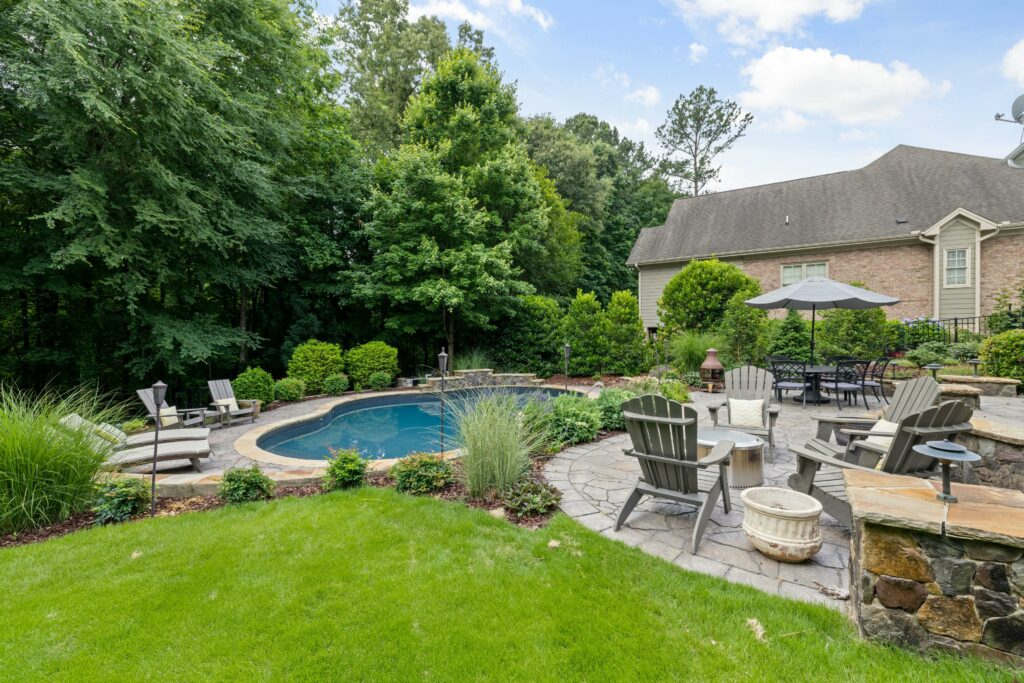
Landscaping is a home renovation project that is becoming increasingly popular with renters and homeowners alike. Investing in good landscaping has many benefits, such as increasing the use and enjoyment of the space, increasing home value, and improving aesthetics. One survey by the Post Office back in 2020 found that landscaping has the potential to increase a home’s value by up to 77% in some cases; however, more conservative valuations place this around 6 to 20% for most homeowners.
Understanding your landscaping preferences and needs is crucial, regardless of your reasons for enhancing your outdoor space. This understanding, coupled with what aligns best with your lifestyle and home, can work wonders. It can truly transform your outdoor space, turning it into a place of beauty and tranquillity that elevates your property.
But what exactly do you need to do with your landscaping, and what should you consider before spending the cash and overhauling your outdoor space?
Your Budget
One of the most important factors in your landscaping plans is your available budget. This will determine the scope of the work you can carry out and the timeline for completion. Whether you have a smaller or larger budget, it’s essential to sit down, assess what you can realistically afford, and then explore the costs of DIY work and contractor quotes to understand what your budget can achieve.
Design
Everyone will have different needs regarding the design and functionality of their garden. So before you talk to anyone or start buying stuff to overhaul your garden, take some time to consider the design aspects you want, the way your garden flows, and how you use it. Remember, it’s your space, and you can personalise it to your liking. Choosing aesthetics over function and form is not worth spending time and money improving your garden. This personalisation is what will truly make your outdoor space unique and reflective of your tastes and needs.
Draw up some rough plans; you don’t need to be an artist or designer; simply make a rough shape the same as your garden, the main entry points, and then look at what the space can accommodate and how it will work best.
Essentials
When it comes to your garden, what’s essential for you will be different from what’s essential for others. It’s important to be clear on what you won’t compromise on, your non-negotiables. These could be features like turf for dogs to play on, raised flower beds, a greenhouse, or a built-in cooking and dining area. Your needs should be specific and included in the plans from the start to ensure you get what you need.
Structure
Structure is an important aspect of your landscape design, especially in more hard-landscaped areas. Structures in gardens include pergolas, greenhouses, a bespoke summer house, log cabins, raised beds, stairs, decking, etc.
You need to utilise different structural elements for your garden to create an eye-catching feature that stands out as a focal point. Exactly what heat you use is entirely up to you, the size of your garden, and what your budget can accommodate, but the structure of your structure to give definition is something to think about.
Products and Materials
Another vital consideration is the type of materials you will be using. Different landscaping materials cost more or less than others; this is an obvious fact. But you need to carefully consider the implications of different materials for your budget, your garden and the overall look and feel you’re going for.
For a more high-end finish, materials like porcelain tiles can be worth the investment, as can adding a bespoke hardwood pergola, using timber sleepers, Indian sandstone, and adding products such as inground firepits, pools, water features, and more. Of course, materials and features such as these will come with a higher cost than more budget-friendly options.
While you might be looking to get as much as possible out of your money paying attention to the overall look and feel of using different materials can show you how to blend cheaper materials with more high-end options for improved results, allowing you to create a more impactful look and style and save some money, too. This process of blending materials can inspire creativity and imagination, giving you the opportunity to create a unique and personalised outdoor space. It’s not just about the cost but about the creative potential that comes with choosing and blending materials.
Maintenance
Are you going to be able to upkeep the landscaping and design once it’s completed? While a delightfully intricate and blooming garden filled with life and vibrancy thanks to plants and shrubbery will look amazing once it’s completed and in full bloom, are you realistically able to upkeep the design? There is a lot of work involved in maintaining a garden, plants, lawns and vegetable plots, so if you’re considering adding these to your design, make sure you’re able to maintain them year after year. Going for artificial lawns or ornaments over plants can be a better compromise alongside more hard landscaping options for those looking for a more low-maintenance option. Be prepared for the time and labour required to stay on top of keeping your garden looking good before committing to certain plans. There’s nothing wrong with starting with a small raised planter before investing in more flower beds so you can build up your skills and gardening expertise, especially if you’re new to this, or adding real plants in pots to a hard landscaped area post-completion.
This foresight and planning will make you feel responsible and prepared for the long-term maintenance of your landscaping. It’s not just about the initial design but about the ongoing care and maintenance that will keep your outdoor space looking its best.
There is a lot to consider when making the decision to overhaul your garden and turn it into a haven for the whole family to enjoy and a place you want to spend time in. whether you’re making massive changes for a complete overhaul or more cosmetic adaptations to enhance the feel of certain aspects of your garden, thinking through these points can give you a solid base to start from.







Leave a Reply